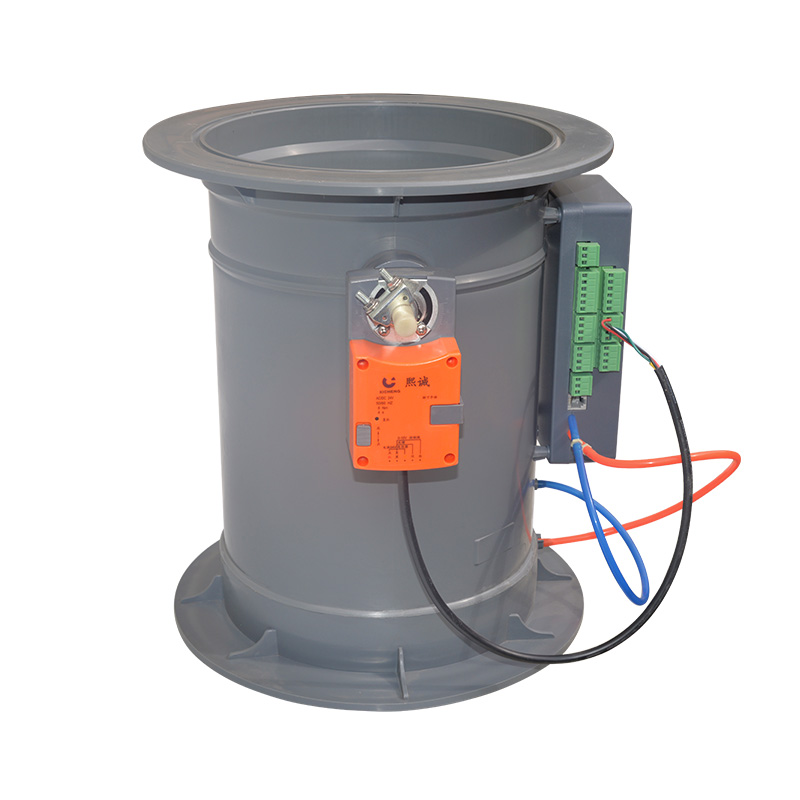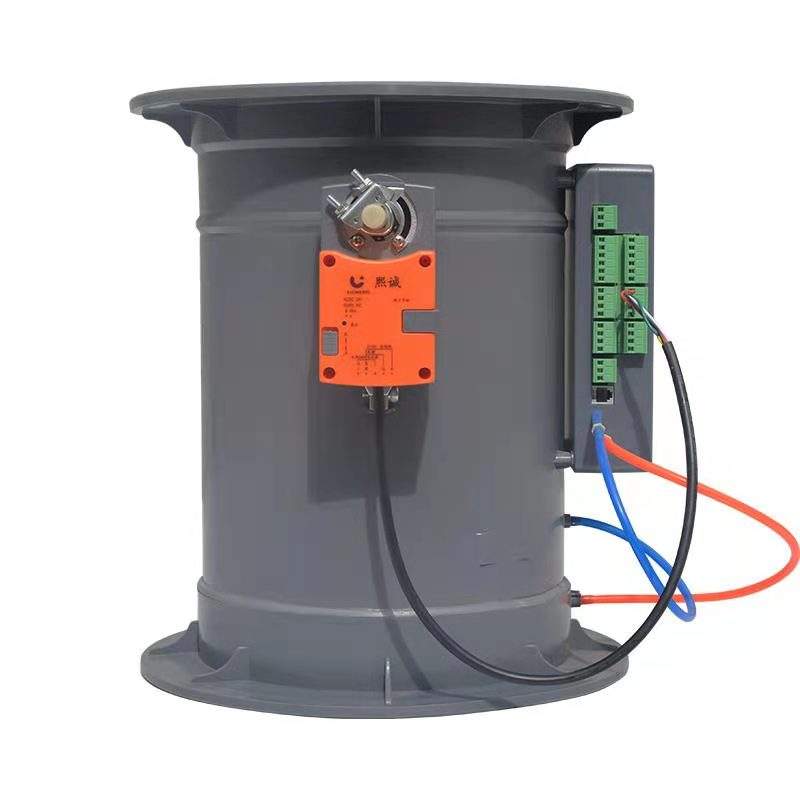Introduction to Variable Air Volume System (VAV System)
Category : Blog
Introduction to Variable Air Volume System (VAV System)
Variable Air Volume System (VAV)
The Variable Air Volume System (VAV system) was born in the United States in the 1960s. According to indoor load changes or changes in indoor required parameters, it maintains a constant supply air temperature and automatically adjusts the air supply volume of the air conditioning system, so that the indoor parameters meet the requirements. Full air air conditioning system. Since the air conditioning system operates at part load most of the time, the reduction in air volume results in a reduction in the energy consumption of the fans. The VAV system seeks to meet the requirements of the indoor air environment with less energy consumption practicality
- The operating cost is low. Since the air volume decreases with the decrease of the load, the cooling capacity and fan power are close to the actual needs of the building’s air conditioning load. In the transitional season, the outdoor fresh air cooling capacity can also be utilized as much as possible.
- The indoor temperature of each room can be adjusted individually, and the air volume adjustment of each room is directly controlled by the thermostat installed in the room.
- It has the advantages of general low-speed central air-conditioning systems. For example, it can carry out better air filtration, noise reduction, etc., and is conducive to centralized management.
- Unlike other systems, the number of indoor air changes, airflow distribution and fresh air volume can always be guaranteed. When the air volume is too low and affects the airflow distribution, the end reheating can only be used instead of further reducing the air volume.
Laboratory Airflow Control System Features
Laboratory Safety
Safety is one of the most important goals of a laboratory. Laboratory safety includes two parts: ensuring the safety of operators in the laboratory and ensuring the safety of the surrounding environment of the laboratory. The surface wind speed control of the fume hood can better ensure the safety of operators in the laboratory; the ventilation and pressure control of the laboratory is an important means to ensure the surrounding environment of the laboratory.
In order to ensure the safety of operators in the laboratory, we need to accurately and quickly control the airflow of various experimental equipment to ensure that the toxic and harmful gases generated in the experiment will not overflow and endanger the safety of personnel. Keep the surrounding environment safe with laboratory pressure control.
Energy saving of laboratory airflow control system
Under the circumstance that energy saving and emission reduction has become an important indicator, energy saving has become a very concerned issue for laboratory managers and construction units. In general commercial buildings, the fresh air ratio is 15%, while for laboratories, in order to ensure the safety of the system, 100% fresh air is usually used, and in order to ensure the experimental conditions, sometimes the ventilation system runs continuously for 24 hours, which consumes a lot of energy (ventilation and air conditioning). The energy consumption of the system is usually 10 to 100 times that of ordinary commercial buildings). Therefore, under the premise of ensuring safety, energy consumption should be reduced as much as possible.
Operation and maintenance of the laboratory
To ensure the stability of the laboratory control system, the control system must be simple and reliable. Intelligent technology airflow control system, simple and reliable working principle, stable product performance, no need for regular maintenance.
In order to facilitate future management and maintenance, the laboratory control system should be able to easily integrate with the building control system, have an open network platform, and have functions such as monitoring energy usage, alarming, and safety analysis.
Flexibility of the system
The design of a good control system should try to consider the user’s updatable function of the function in the future. The increase, decrease and displacement of equipment such as fume hoods during renovation and expansion, as well as the change of laboratory pressure polarity, the intelligent technology control system can be easily adjusted, and the system has good scalability.
The health and comfort of the experimental environment
Ensure that the laboratory has a suitable and stable temperature and humidity, and the airflow is stable and odor-free, providing a healthy and comfortable working environment for the laboratory staff to improve work efficiency.
Laboratory Variable Air Volume Control System Program Introduction
Fume hood surface wind speed control system consists of a single fume hood surface wind speed control system including: fume hood surface wind speed controller, surface wind speed sensor, adjustment window displacement sensor, exhaust valve (with anti-corrosion coating), and unmanned sensor (optional) composition.
Using the surface wind speed sensor, the fume hood controller detects the wind speed, and uses the adjustment valve to increase or decrease the wind speed, so as to control the surface wind speed of the fume hood to maintain the specified 0.3 ~ 05m/s. In addition, when someone is operating the fume hood, in order to speed up the adjustment of the opposite wind speed, the adjustment window displacement controller can speed up the corresponding speed of the surface wind speed, thereby improving the response time of the surface wind speed.
The displacement sensor is installed on the adjustment door of the fume hood to sense the position of the adjustment window of the fume hood, calculate the opening of the fume hood, and input the potentiometer signal into the fume hood monitor. Change the position to calculate and adjust the valve according to the calculation, and do not have to wait for the wind speed sensor to detect that the wind speed is low before adjusting, so as to ensure the rapidity and accuracy of the constant surface wind speed of the fume hood.
This control scheme makes up for the shortcomings that the surface wind speed sensor alone is not fast enough to respond, and the air volume of the displacement sensor alone is not the real wind speed.
For a fume hood to accurately control the surface wind speed, the surface wind speed controller, the wind speed sensor, the displacement sensor, the regulating valve, and the corresponding power connection line are required. The manned and unmanned sensor is an optional device. With this sensor, a high surface wind speed such as 0.5m/s can be maintained when there are people in front of the fume hood, and a low 0.3m/s when no one is present, so that the It can further reduce system power consumption while ensuring the safety of operators.

Composition of laboratory negative pressure residual air environment control system
After accurately controlling the surface wind speed of a single fume hood in the laboratory, in order to maintain the safety of the surrounding environment of the laboratory, it is necessary to control the negative pressure of the laboratory. By keeping the laboratory at a reasonable negative pressure (negative tens of Pa), the leakage of laboratory gas into the corridor or adjacent offices can be avoided. It is very important to ensure the safety of the environment around the laboratory, such as corridors, laboratory personnel offices, etc.
Since the use of negative pressure control requires the airtightness of the room, the opening and closing of doors and windows, etc., another room control system that reasonably controls the fresh air and safety of the room is the use of residual air volume control. The residual air volume controller refers to monitoring the exhaust air volume of the entire laboratory fume hood before adding a certain amount of fresh air to form a reasonable fresh air and maintain a certain residual air volume environment.
A laboratory negative pressure control system includes a negative pressure controller, a differential pressure sensor, and a regulating valve; the residual air volume control system includes a residual air volume controller, and the valve can be adjusted.
The composition of a single whole laboratory variable air volume control system
The composition of a single whole laboratory is to have the face velocity controller of each fume hood integrated with the room negative pressure control system.
- Adjustment window displacement sensor
- Regulating valve
- Sided fan speed controller
- Sided wind sped sensor
- Room pressure sensor
- Regulating valve
- Supplementary air regulating valve
- Room negative pressure controller
Composition of multiple laboratory variable air volume control systems.
The composition of multiple laboratories is that the entire system can be formed by networking the air inlet and exhaust ducts, as well as the electric control part of the network according to the actual situation in multiple rooms.
